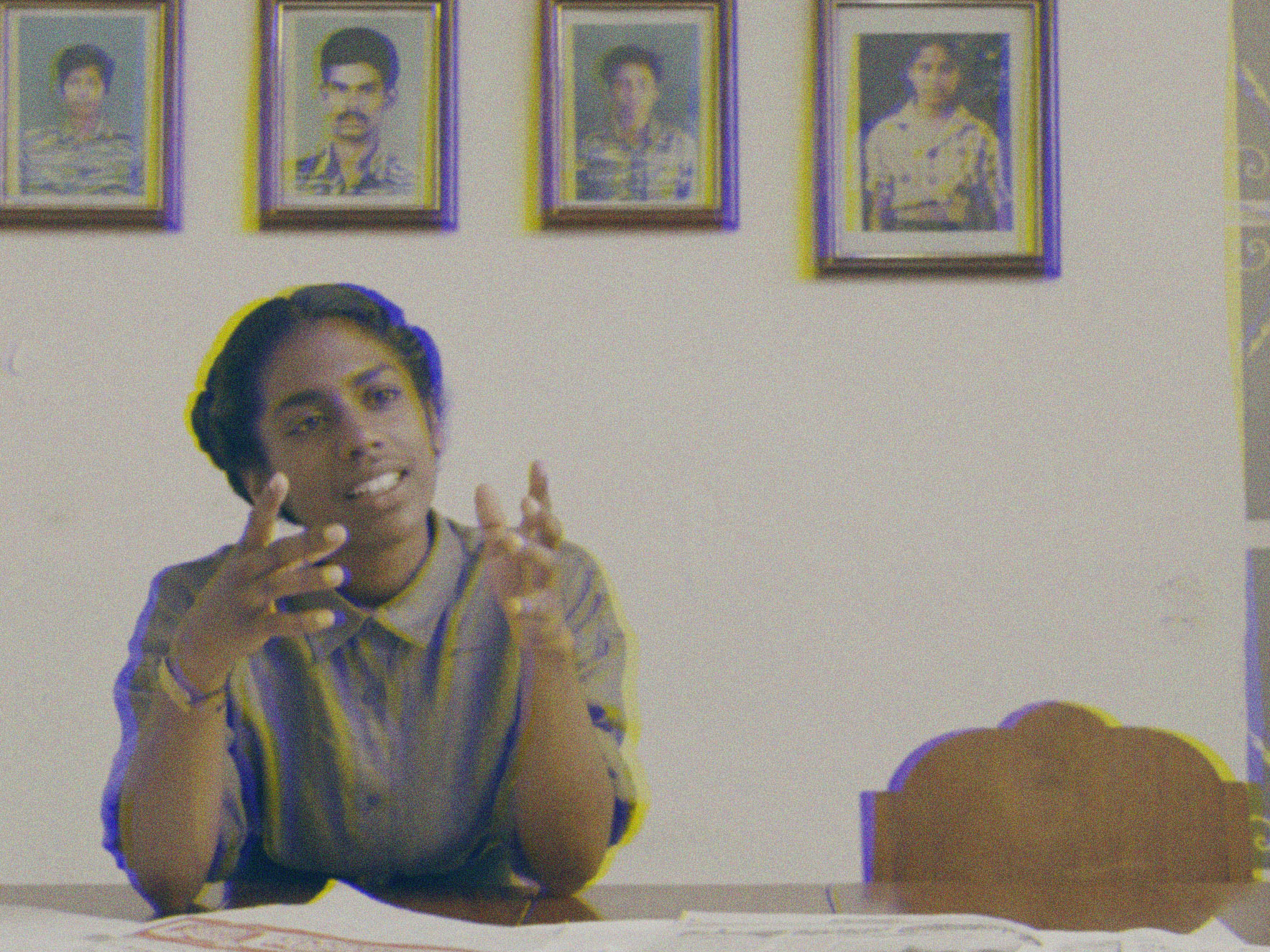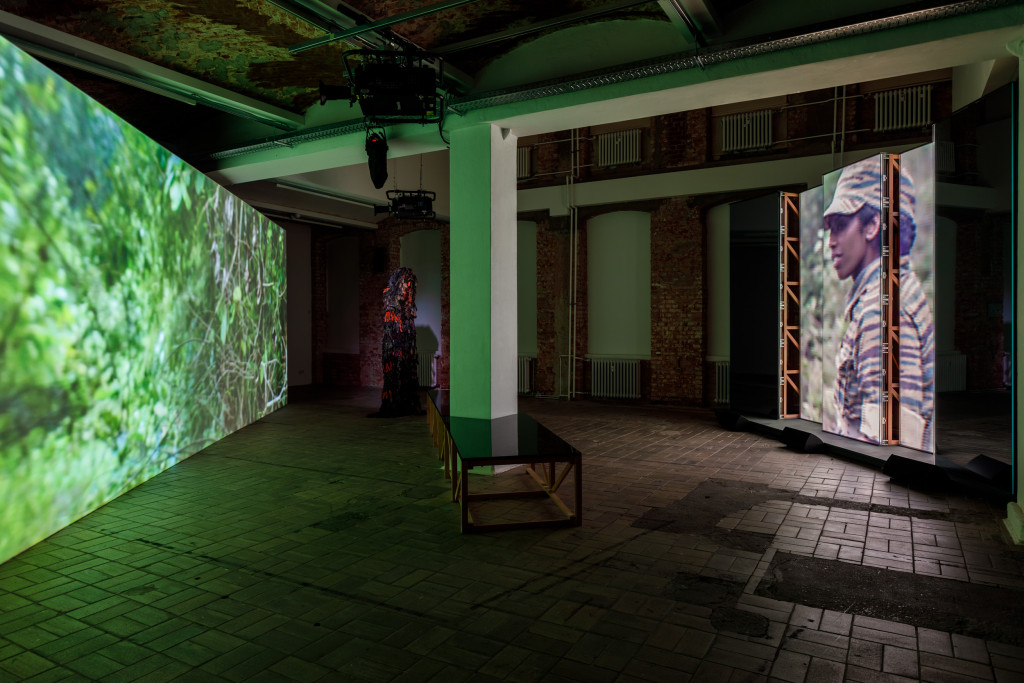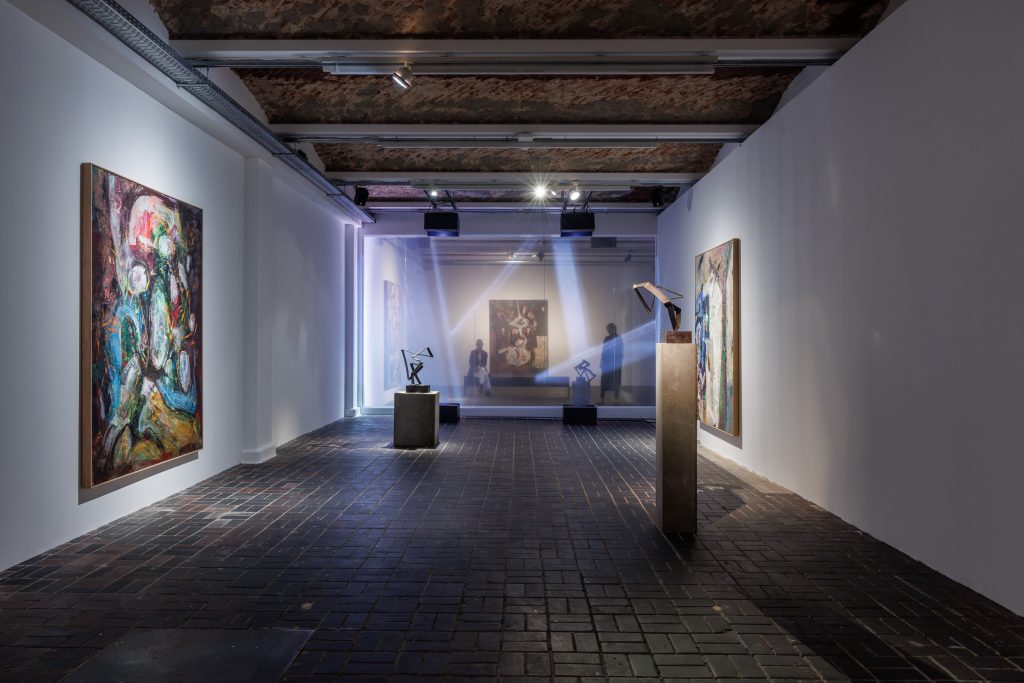Living Legends
For the Yatreda collective, NFTs are a way of bringing Ethiopia’s past into the present—and preserving it for the future.


“It wasn’t about the truth,” says Kim Kardashian, dressed in a shimmering black-gloved jumpsuit. “It was about how you tell the story.” She is describing her experience of the trial of OJ Simpson (Kardashian’s father, Robert, was OJ Simpson’s friend and defense attorney). She relays her personal experience with a critical distance, portraying the case as a historical milestone in media. What was the public willing to believe? As it becomes clear that this is a deepfake, artificially constructed for the video we’re watching, the layers of reality and carefully crafted narrative become dizzying to sort through.
This is one of many fictions in Christopher Kulendran Thomas’s show “Another World,” at KW Berlin through January 15. His work is often about collaborative networks: both as strategies for collective ownership and as sources of creativity, whether mediated by humans or AI. The exhibition begins with his new installation piece, The Finesse, produced with collaborator Annika Kuhlman, co-commissioned by the Institute of Contemporary Arts in London, where it is concurrently on view. (The ICA’s version of the exhibition runs through January 22.) In this work, two films are shown on screens facing one another: one a projection, depicting the quiet verdant hum of jungle; the other a row of five columnar screens showing a 45-minute film, a collage of archival, staged, and deepfaked footage—this is the one with the Kardashian cameo.
The central focus, however, is Eelam, the de facto, self-governed state set up by Tamil revolutionaries during the Sri Lankan civil war of 1983–2009. In what appears to be historical footage (but was really shot with actors in the present day), a Tamil architect and freedom fighter shows Western journalists around a solarpunk settlement, where fossil fuels are unnecessary, women are treated fairly, and public goods are owned collectively. It’s a radical vision for a city, drawing on Soviet urban architectural theories, Tamil ideas about artists’ role in society, and a belief in the importance of community above the individual. Kulendran Thomas’s family, who fled Sri Lanka for London in the 1980s, were part of this struggle for an independent Tamil state, and the injustice of its loss pervades the film. As the artist puts it in an epigraph for the exhibition: “How do you tell the story of the losing side of a conflict when history has already been written by the winners?” Especially when, as the film explains, the aftermath of 9/11 made governments quick to portray any political resistance as a terrorist movement. The Finesse creates an alternate history, where the stated ideals of Eelam are still possible—a portrait of a moment of potential with the persuasive feeling of a manifesto.
The story of blockchain and its revolutionary potential often seems to have sprung out of nowhere.
Blurred boundaries pervade The Finesse, where the notion of a single true narrative is described by Tamil activists as a tool used by national governments to ensure social cohesion. But when such stories are rejected, what do we have left? The answer of Eelam’s activists: the network. In several segments of the film, researchers describe how the nascent ’90s internet inspired the Tamil freedom fighters to build collectively owned systems for proliferating information. If we rely on a business like Yahoo (yes, this is definitely the ’90s) to provide us with the truth, we are told, such a truth is necessarily shaped by Yahoo’s commercial interests. What if it were not the shareholders’ interests that informed decisions about how information was disseminated, but the people’s?
“I am not against markets,” says our guide to Eelam. “When markets are free they will lead to ownership of the means of production by the people.” It’s phrasing that feels straight out of the mouths of leftist proponents of blockchain technology as a solution to the democratic and societal ills of the twenty-first century. The link is surely deliberate. For the show’s accompanying program, Kulendran Thomas hosted a talk with Ethereum founder Vitalik Buterin as part of the artist’s newly launched website Earth—a reading list on an attached Discord channel includes literature on DAOs and other decentralized social forms. The story of blockchain and its revolutionary potential often seems to have sprung out of nowhere. Kulendran Thomas imagines a new, highly specific history for these ideals, in the networked revolution of Eelam. The film is fictionalized, of course, and the question mark over the anachronistic technological dreaming feels like part of the point.

If the first floor of “Another World” is about the ways that fictions shape politics, the second suggests the same about the art world. The floor is split into two sections by a glass wall. Around this divisive intervention hang paintings whose imagery was generated by a neural network trained on works from the Western canon and the contemporary Sri Lankan scene. These are abstract scratchy compositions that we might call expressionist, although it feels odd to ascribe expression to a neural net.
Next to the AI paintings is a series of ceramic works by the artist Aṇaṅkuperuntinaivarkal Inkaaleneraam, who, according to the exhibition’s wall text, was a leading light of the Eelam artistic movement, evidence of which was eradicated with the settlement itself (in fact, this pseudonym represents a collaboration between artists from the Eelam diaspora, who organize on Discord). Earth-toned, and split into rectangular fragments, the ceramic works combine symbols such as birds and eyeballs with a queer exploration of sexuality beyond Western binaries, influenced by socialist realism as well as ancient Tamil poets and scholars. The juxtaposition of the two series emphasizes how both are the results of collaboration, through human and computer networks.

There is a similar focus on the creative process in Being Human (2019), another work developed with Kuhlman projected on the gallery’s dividing glass wall. The video is framed as a documentary-style journey around Sri Lanka during the first Colombo Art Biennale in 2009. There are interviews with fictionalized artists who took part in the (real) biennial, as well as Kulendran Thomas’s own uncle, who set up a human rights center in Eelam. Again, a deepfaked celebrity (this time, Taylor Swift) spouts out-of-character philosophical meditations on contemporary society. “Maybe simulating simulated behavior is the only way we have of being real,” Swift suggests. Does she have a point? When our lives are filtered through social media, authenticity is more elusive than ever—but what if the search for “the real thing” weren’t the end goal? What if the whole notion of true individual expression is a myth? This thesis, when taken to its natural conclusion, represents a radical riposte to our understanding of artistic value. Art is less of a profound monument to humanity and more of a synthesis, an organic process created memetically through community and collaboration.
Art is less of a profound monument to humanity and more of a synthesis, an organic process created memetically through community and collaboration.
As algorithmically generated art, writing, and photographs become increasingly easy and cheap to produce, the question of how we set human-made art apart is urgent. In “Another World” Kulendran Thomas suggests that we already make art as algorithms do. Artists collaborate and draw on influences until they spit out something new. Artistic value debased to the level of the mechanical, in a world of political stories being pulled constantly over our eyes—when you put it like that, it all feels rather grim. But somehow, Kulendran Thomas’s focus on community over the individual, on the network over the node, gives us something to hope for.
Josie Thaddeus-Johns is a freelance art and culture writer living in Berlin.
